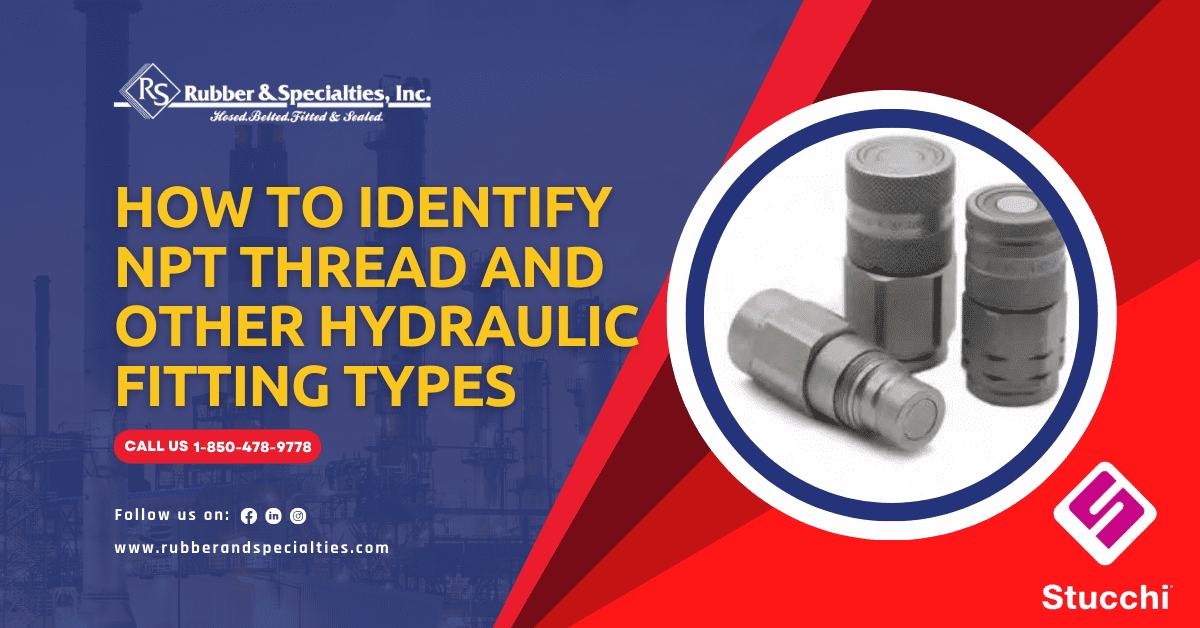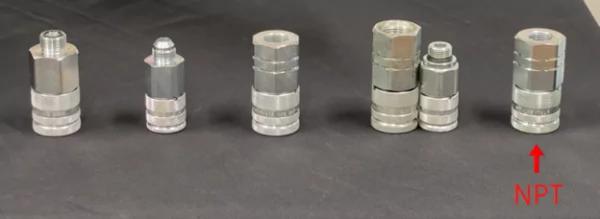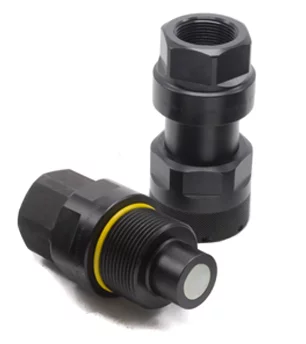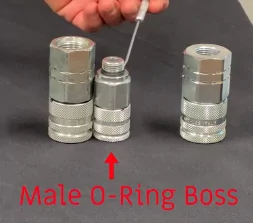
How to Identify NPT Thread and Other Hydraulic Fitting Types
Just about every industrial application utilizes machinery and equipment powered by hydraulics, from agricultural, earthmoving, and snow removal machines to industrial diecasting and molding equipment, oil and gas exploration, construction and demolition, automotive manufacturing, aerospace, aeronautics, and more. The vast number of applications powered by hydraulic systems require countless different types of hydraulic fittings and adapters with various port types, thread forms, and sealing methods.
Hydraulic Thread Identification Is Critical for Safety and Productivity
It can be fairly simple to identify different sealing methods, although distinguishing hydraulic threads by appearance can be more challenging. They can look quite similar at first glance, and using the wrong type of hydraulic fitting can have catastrophic consequences. It is critical to correctly identify hydraulic threads to select the right replacement part during maintenance and repair processes.
Stucchi offers video instruction to correctly identify the most common
hydraulic fitting port threads
Using the wrong type of hydraulic fitting can lead to malfunctions, damage the thread, and compromise the seal reliability and pressure holding capacity. Learn how to correctly identify hydraulic threads to protect your equipment and workers for safe, productive, and profitable operations.
The Most Common Types of Hydraulic Threads
The most common type of quick coupler hydraulic threads include:
● NPT thread – National Pipe Tapered Thread: NPT threads are traditional tapered fittings used in hydraulic and pneumatic systems. They are a metal-to-metal sealing type that requires a pipe sealing like Teflon tape or pipe dope to make a leak-free connection. We do not recommend unmaking this connection, as it will leak upon reconnection.
● SAE thread / ORB thread – Male O-Ring Boss – can be identified by the visible O-ring at the base of the male thread. The SAE/ORB Male O-Ring Boss thread and the straight JIC 37° Flare are both the same threads, although the ORB seals with an O-ring for a better leak-free connection.
● BSPP thread – British Standard Parallel – a straight thread often expressed as a “G” thread that requires a secondary bonded washer or dowty seal to make a leak-free connection.
● JIC thread – Joint Industrial Counsel Thread (37° Flare Type) – common in fluid power systems and can withstand higher working pressures. Both male and female fittings have 37° seats with a seal made at the flare of the male coupler and the coned seat of the female. Can be disconnected and reconnected without concern, although are susceptible to cracking when overtightening.
● ORFS thread – O-Ring Face Seal – identified with an O-ring against the shoulder of the male. This is a straight thread type, and the connection can be made and unmade without risk of leakage.

NPT thread is the most common type of hydraulic fitting thread used in North America, from ¼ NPT through 2” being the most common. Other types of quick couplings are prominent in many types of industries and applications.
How to Identify NPT Thread and Other Hydraulic Threads
In order to choose the correct type of hydraulic hose fitting for applications, operators must know how to determine the type of quick coupler fitting and match the port connection with that on the hydraulic hose. It is critical to determine the type of fitting design, thread size, and type of seal when installing, repairing, or replacing hydraulic quick couplers.
Operators must:
- Determine the gender of the coupler – determine whether the coupler you need to replace is male or female. Male couplers typically have the portion of the body machined to fit within the female and are sometimes called nipples or plugs. The female couplers have retaining rings or components that accept the male stem and may have a retractable sleeve used to release the connection.

- Determine the type of hydraulic fitting – Stucchi helps you distinguish between the most common NPT thread and other hydraulic fitting types
- Match the port connection to the hydraulic hose – make sure the port fitting port connection matches the hose
- Identify the type of seal – technical characteristics include O-Ring, tapered, or mated angle. Mated angles are parallel or straight thread types where the male and female create the seal. Tapered threads will show threads on the outside of the male and on the inside of the female. ORFS, or O-ring fittings, will have the seal already included in the fitting.
- Identify the fitting and thread size – refer to this Common Port Threads table for more information on fitting types and sizes and see Stucchi’s Hydraulic Coupler Sizes for specific quick coupler specifications.
Quick Coupler Fitting and Port Identification Tools
Operators should use the proper tools for hydraulic thread identification, which include:
- Thread gauge (or pitch gauge) –accurately measures the thread-to-thread spacing. In metric applications, the pitch is the distance in millimeters between each thread. In all other hydraulic thread types, the pitch is measured as the number of threads per inch.
- Calipers – measures the outer and inner diameters of hydraulic fitting threads
The first thing to do is determine if the thread is parallel or tapered. NPT threads and BSPT threads are tapered, whereas BSPP and ORFS are parallel threads. This can often be accomplished during a visual inspection as a parallel thread will remain the same throughout the entire fitting diameter, whereas tapered threads will get smaller towards the end of the fitting. A caliper can help make this determination if it is not obvious by visual inspection.
If an O-ring is present, this is an indication that the male thread is parallel. ORFS (flat face) fittings will have an O-ring visible in the groove of the end (shoulder) of the male thread, whereas ORB fittings (male O-ring Boss) fittings have the O-ring in the base of the male thread. The presence of an O-ring will help to eliminate possible thread forms.
After determining a parallel or tapered thread, operators should determine the pitch. A pitch gauge is a useful tool here to accurately measure and calculate the number of threads in a given distance. Be sure to use the right type of gauge with plenty of lighting, as some thread pitches are relatively similar. This further helps to identify hydraulic fitting types, as quick couplers have distinct pitches.
Once the fitting is determined to be parallel or tapered and the pitch is known, it is important to identify the correct quick coupling size. For pipe threads, the size is determined by measuring the outer diameter and subtracting ¼”. To measure non-pipe threads (metric tapered or parallel), measure the outside diameter with calipers. View a sortable table of all of Stucchi’s quick coupling sizes here. All Stucchi products can be filtered by port type, size, working pressure, and other options such as industrial use, and hydraulic specialists are always available to provide custom hydraulic solutions.
Watch Stucchi’s video to see the difference between the various thread types and how to distinguish NPT thread from SAE thread, JIC thread, and other common hydraulic fitting types.
SOURCE: https://www.stucchiusa.com/blog/how-to-identify-npt-thread-and-other-hydraulic-fitting-types/


